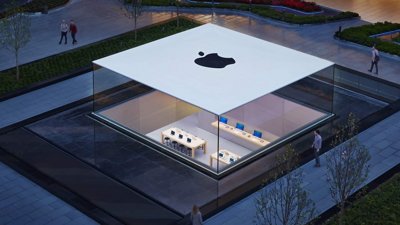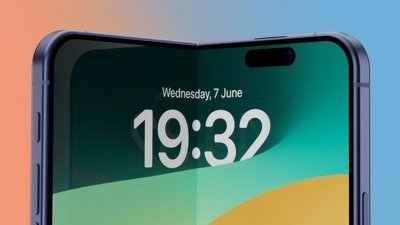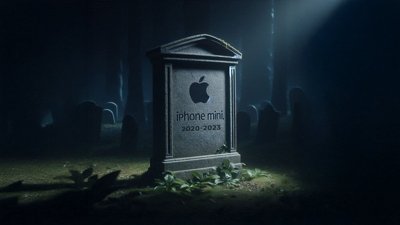When Steve Jobs introduced the iPhone in 2007, it was meant to be a crossroads between communication, technology, and design. After a few years of ramping up the supply chain and gaining popularity, the iPhone began to dominate the smartphone market.
Since the iPhone 4, no other device line has penetrated the market in the same way. Despite concerns from analysts that Apple was becoming too reliant on the iPhone, the company pivoted to services and software sales that fed off the increasing install base.
Having one central device act as a magnet to other portions of a company's business has been referred to as the "halo effect," and this phenomenon plays a vital role in the Apple ecosystem.
iPhone Features
The basic slab-of-glass-and-aluminum design hasn't changed much over the lifetime of the iPhone. Interaction paradigms have shifted, and Apple has moved from Touch ID to Face ID, but overall the concept of a piece of glass displaying relevant information has remained constant.
Apple developed specialized software specifically for the iPhone and touch interfaces called iOS. The operating system shares many elements with its macOS cousin but focuses on a touch-only interface. As of iOS 13, Apple branched the OS into two different forks, iOS and iPadOS, to address hardware-specific features more directly.
Apps
The App Store operates as the sole storefront for software on iOS devices. Apple does not allow users to side-load apps from the web or use other app stores on iOS.
Many anti-trust investigations surrounding the App Store and how business is conducted have shown no evidence of a rigged system or monopoly. Even so, some companies like Microsoft or third-party developers still call for investigations into Apple's business practices.
All apps and subscriptions sold in the App Store are subject to a 30% service fee on Apple Platforms. Subscriptions that retain a subscriber for over a year are only charged 15%.
Apple pre-loads every iPhone sold with several default apps, and they are all first-party apps. Once users finish the onboarding process on a new iPhone, they can go to the App Store and download free and paid apps via their Apple ID.
App updates are free, but some features may be locked behind paywalls called in-app purchases or IAP. Some apps charge a subscription fee instead of IAP, which will unlock features once a user subscribes.
The App Store makes most of the profits in the mobile app market despite having a smaller user base than Google Play.
Camera
The smartphone camera was a relatively new concept when the iPhone was released in 2007. Since then, Apple has used its expertise in tying hardware and software together to produce industry-leading mobile photography engines that fit in your pocket.
Apple releases new photography-focused features with each new hardware or OS release, as consumers have shown that to be a high priority for new-device purchases.
The iPhone 14 Pro and newer can shoot 48MP photos using the ProRAW format to capture large and detailed photos. It is also capable of recording ProRES video in 4K.
Computational photography has only improved in recent generations. For iPhone 16, Apple now offers reversible Photographic Styles that basically enable the user to apply styles and reprocess a photo as if it were freshly captured.
Live Photos
The iPhone will capture 1.5 seconds of video before and after the camera shutter is pressed. This produces a playable video with sound to show off the events surrounding the image capture. When editing Live photos, users can select which frame is shown as the still, and all edits made to the still photo are applied to the entire Live Photo.
Swiping up on a live photo within the Photos app will let users change the still image into a looping GIF or a long exposure. These changes show up as live tiles within the day-view of the Photos app.
Portrait Mode
When using Portrait mode, the iPhone will utilize multiple cameras to determine the depth map of what is being photographed, then produce a simulated bokeh effect live on the screen. The iPhone SE has only one camera but still takes portrait mode photos using algorithms to determine the borders of objects, which can detect even fine hair for use in the image.
Quick Take
A feature introduced in iOS 13 called Quick Take lets users quickly start recording a video when using the Camera app. While in the camera section of the Camera app, holding down the shutter button will begin recording in 1080p video. This is much faster than switching to the video mode if you're already snapping photos.
Night Mode
Apple's Neural Engine can capture multiple exposures of a single scene and stitch it together into a fully exposed image. This is called Night Mode, and it occurs exclusively from every other camera operation. Bright scenes use HDR, medium scenes use standard exposure, and darker scenes default to Night Mode.
When Night Mode is active, users can adjust the exposure time to multiple seconds, and the available time extends if the iPhone is used on a tripod. Capturing nearly pitch-black scenes or night skies is now easily done without technical skill. The resulting image will be exposed, so it still appears to be a nighttime or dark photo, an alternate approach to Apple's competitors.
The iPhone 12 Pro series added Night Mode portraits, and the entire iPhone 12 series supported Night Mode selfies, which carries over into newer models.
Deep Fusion
This enigmatic feature was announced as a part of the iPhone 11 release in 2019. The user couldn't control or select it, and there is no setting anywhere in the OS for enabling it. The feature does not work with "capture outside the frame" enabled.
When the shutter is clicked, the Neural Engine observes a still subject in medium lighting and automatically switches to multiple exposures. The iPhone will capture nine different images when this happens, with the one on the shutter press acting as the anchor image.
The Neural Engine and machine learning algorithms break all nine images down pixel by pixel and "decide" which pixel will remain in the final composite image. This results in a photo created by machine learning rather than based on what was captured by the sensor.
A Deep Fusion photo will contain a higher amount of detail, color and shadow accuracy, and exposure when compared to images captured without the process. The feature is designed to be completely invisible, and users will not know if it has occurred or not without specialized software that searches metadata within the photo.
Apple upgraded its Deep Fusion system on iPhone 14 by moving it to earlier in the process, so images could retain more color and texture.
Display
Super Retina XDR with ProMotion
- Used on the iPhone Pro models
- All-Screen OLED
- HDR-ready
- 2,000,000:1 contrast ratio
- 120Hz variable refresh
- True Tone
- P3 Color
- 1000 nits of brightness
Super Retina XDR
- Used on the standard iPhone models
- All-Screen OLED
- HDR-ready
- 2,000,000:1 contrast ratio
- True Tone
- P3 Color
- 800 nits of brightness
The iPhone 11 and iPhone XR use a Liquid Retina HD display that is a LED with lower pixel density (326 PPI) and contrast ratio (1,400:1). The iPhone SE and older Touch ID-based iPhones use a screen called the Retina HD display, and it has the same specs as the Liquid Retina HD display but is a wide-screen display.
Security and Privacy
Any iOS device you buy comes fully encrypted by default. When setting up the device for the first time, Apple prompts users to secure their iPhone with a passcode or passphrase, then locks it with biometrics.
Biometric data is end-to-end encrypted and stored within the Secure Enclave on the device. The actual biometric information is discarded. Instead, a mathematical representation of the data is stored in the Secure Enclave for comparison at each prompt.
Apple says privacy is a fundamental human right, and it designs its products with that in mind.
Face ID
At the top of the iPhone, the sensor array contains infrared scanning technology that will collect depth and image data of the face being scanned every time Face ID is used. Machine learning algorithms also look for a "live" subject with eyes open and looking at the camera to prevent 3D models from fooling the technology.
The infrared scanner sprays the target with 30,000 dots to gather the face data. The eyes, nose, and mouth must be visible for the system to recognize the face when using traditional Face ID.
However, Apple has added a new version of Face ID that uses the unique features found around a person's eyes to identify them. This allows for Face ID use while wearing a mask but isn't as secure as the traditional version.
Apple stated that Face ID is much more secure than Touch ID, and there is a 1 million to 1 chance of a random stranger unlocking your phone. Identical twins are the only exception, and Apple is looking to eliminate this anomaly through more advanced scanning technology.
Touch ID
The Home Button on the iPhone acted as an iconic part of the device for its first ten years of existence until the iPhone X removed it in favor of a full-screen display. The iPhone 5S introduced Touch ID to the Home Button, which would scan for a fingerprint by taking a high-resolution image of the finger presented to compare to what is stored on the Secure Enclave.
The steel ring surrounding the Touch ID button would complete an electrical circuit with the user's finger— a fake finger or deceased person could not unlock the phone. The introduction of Touch ID brought secure encryption to the masses and still exists on some iPads and MacBooks.
The iPhone SE was the last iPhone with Touch ID. It was discontinued in February, 2025.
Apple Silicon
Apple builds its custom processors for the iPhone, iPad, Apple Watch, Apple TV, and the Mac. By developing its chipsets, Apple can customize its software to work directly with the hardware in a way that competitors cannot imitate.
These chipsets are the brains behind Apple's software platforms, machine learning algorithms, graphics processing, and Apple Intelligence. The built-in Neural Engine makes many operations much more efficient, from taking photos to editing video.
The A16 was introduced with the iPhone 14 lineup but was only used in the Pro and Pro Max models. The iPhone 14 and iPhone 14 Plus got the A15 instead, likely as a differentiator and cost-cutting decision.
Apple's A17 Pro is used in the iPhone 15 Pro models and is the first chipset built on the 3nm process. It has hardware-accelerated ray tracing to push video games even further.
A18 is used in the iPhone 16 lineup including the entry iPhone 16e. It enables powerful graphics processing and Apple Intelligence.
Ports
The iPhone has used the Lightning port and cable since it debuted in the iPhone 5. Apple had always shipped its iPhones with a single Lightning cable and 5W adapter until the iPhone 11 Pro, which shipped with an 18W adapter.
The iPhone 12 did not ship with any power adapter or headphones, a move beneficial to the environment and Apple due to lower costs. This means the box is much smaller, so plastic and rare metal use are reduced, and shipping weight and size are also reduced. This is the equivalent of removing 400,000 vehicles from the road.
While the iPhone 13 was rumored to be "portless," the actual release used a Lightning port as usual. Apple continued to ship the iPhone 13 without earphones or a charger.
The iPhone 14 was the last new product with a Lightning port as EU regulations helped spur Apple to USB-C. The first iPhone with USB-C was the iPhone 15 released in 2023, and the last with Lightning was the iPhone SE discontinued in 2025.
Going forward, all iPhones will use USB-C. Apple differentiates the port between standard and pro models by offering USB 2.0 on the former and USB 3.2 gen 2 on the latter.
Accessories
Entire industries exist to provide accessories to the iPhone user base of over 1.5 billion users. Apple offers a few first-party accessories built to offer unique experiences, but third-party manufacturers provide most of the accessories made.
Made For iPhone Program (MFi)
Apple lets companies license proprietary hardware for their products to produce accessories that work directly with iPhone and Apple technologies. The program still exists despite the move from Lightning, but involves different products and chips for licensing.
MFi Software:
- AirPlay
- CarPlay
- HomeKit
- GymKit
- iPod Accessory Protocol (iAP)
- MFi Lightning Game Controller
- MFi Hearing Aid
- Wi-Fi Accessory Configuration (WAC)
MFi Hardware:
- Authentication coprocessors
- Headset Remote and Mic
- Audio Module
- Lightning Analog Headset Module
- Lightning to Headset Jack Adapter Module
- Lightning connectors and receptacles
- Magnetic Charging Module
- Smart Connector
- MagSafe
Cases
Apple makes premium and silicone cases for the iPhone and changes out the options and colors available on a seasonal basis. Third-party companies exist by the dozen that build custom cases to personalize users' iPhones.
Apple eliminated leather from its lineup in 2023, shifting to a material called FineWoven.
While cases usually exist to provide protection and add personality to a device, many features and technology that otherwise do not exist within the iPhone. For example, Lifeproof makes a case that can be fully submerged for underwater video or photography.
There are many specialized cases available that include infrared scanners, microphones, game controllers, and modular camera lens mounts. There was even a first-party Apple Smart Battery Case that added additional battery life with a unique design that was ultimately replaced by the MagSafe Battery Pack.
The iPhone 12 and later, including the phones themselves and official cases, have built-in magnets. Apple calls its magnet system MagSafe, recycling an old branding name from defunct MacBook chargers. The magnets will work with an ecosystem of accessories, including wireless-charging pads and docks, car mounts, wallets, and sleeves. Both Apple and hardware partners like Belkin are making official MagSafe accessories.
Audio
Apple purchased Beats by Dre to absorb their music-streaming service and talent, but along with that came an entire hardware branch. The company still exists as a branch within Apple, and it sells Beats branded headphones with custom chipsets made by Apple.
Beats By Dre with Apple Silicon:
- Beats Studio
- Beats Solo
- Powerbeats
- Powerbeats Pro 2
- Beats X
Apple has its brand of earbuds as well. The AirPods came about as Apple removed the headphone jack from their devices and ushered in a new era of totally wireless audio. Since their release, third-party manufacturers have raced to mimic the all-wireless design, but very few have come close to capturing the same form factor, and battery life found within AirPods.
Apple first-party audio:
MagSafe and charging
The iPhone can use wireless charging, fast charging over USB-C PD, and standard charging over USB. To take advantage of wireless charging or fast charging, users must purchase those accessories separately.
Apple announced but never released a proprietary wireless charging system called AirPower. The charging mat was meant to simplify charging devices wirelessly by enabling users to place their iPhone, AirPods, and Apple Watch anywhere on the mat. The charging mat was ultimately canceled when Apple allegedly could not solve overheating issues.
Apple has since released a new charging and accessory system called MagSafe, which charges the iPhone at 15W and connects via a circular magnet. It is assumed that MagSafe will ultimately replace the Lightning port and handle data and charging on future iPhones.
With the iPhone 13, Apple introduced a new MagSafe feature, adding Find My support to the MagSafe wallet. Rather than checking for a ping from a tracker, the system instead tells users when and where the wallet was detached from the back of the iPhone.
The MagSafe Battery Pack with a Lightning port is no longer for sale as of 2023. Apple could revive the product with a USB-C port, but there hasn't been any signs of it being announced.
Photography and Videography
The mobile phone camera is probably one of the most important things customers consider before purchasing. Since the iPhone became such a popular pocket camera, manufacturers have developed accessories and tools specifically to aid video and photo production.
Gimbles, mounts, flash sync systems, camera lenses, and iPhone-connected smart cameras have created a large market centered around the iPhone camera. When browsing the iPhone homepage on Apple's website, most of the page is dedicated to discussing photo and video capabilities.
When paired with the right talent and equipment, the iPhone can produce competitive high-quality content. A few movies have been made with the iPhone, like "Unsane." During the COVID-19 pandemic, multiple TV shows recorded episodes using the iPhone to observe proper quarantine and distancing.
Apple introduced ProRes support in its iPhone 13 Pro range to play into home movie making. Pro users can record 4K 60Hz ProRes directly to an external USB-C SSD with iPhone 15 Pro and iPhone 16 Pro.
Services
The iPhone wouldn't be what it is today without the help of software and services. Apple has slowly built an entire software ecosystem surrounding its ever-popular pocket computer. Through each of these services, paid or not, Apple adds to the base value of every iPhone sold.
After years of being told that Apple was too reliant on the iPhone as a single majority source of income, the company uses its services branch to build out and diversify its revenue. Services have become the size of a Fortune 500 company itself and continue to grow with each new effort from Apple.
Users can bundle Apple's paid services under a tiered subscription service called Apple One.
Siri
When the iPhone 4S was released with a virtual assistant, no one took it seriously. Initially, Siri could only act as a voice-controlled assistant that handled the most simple task or query.
Now, Siri is a powerhouse piece of machine learning that exists on every Apple device sold. On the iPhone, Siri not only acts as a user-facing assistant with deep app connections and controls, and it also serves as the background intelligence that powers everyday operations.
Contacts, Calendar, Photos, and even the system keyboard rely on Siri Intelligence to manage information and surface what is most relevant to the user. Siri also acts as the brains behind Shortcuts, which can be activated via the assistant, through widgets, or in-app.
Apple does not directly monetize Siri, but it does use the assistant as a primary selling point for iPhone and accessories like HomePod mini and AirPods.
iMessage
Apple has often stated that the Messages app is the most used app on the iPhone. An iMessage is an Apple proprietary technology using end-to-end encryption to send messages via the web. Sending and receiving iMessages is exclusive to Apple products and has been cited as a significant source of consumer lock-in.
When communicating via iMessage, a user sees "blue-bubble" messages, can share complex multi-media files, and use sticker packs and message effects. Apple also enhances iMessage group chats with unique features like message threads and custom group chat images.
Apple Music
The music streaming service that birthed Apple's push into services debuted in 2015. Apple Music is $10.99 a month and offers student and family plans. The service lives within the Music app on iPhone, iPad, Mac, and on the web.
Users can purchase music from iTunes when it is not available on the service, and it will be populated into their Apple Music library. If a user adds a physical CD to their Music app on macOS, the music will be synced across their account as well.
Apple Arcade
Apple Arcade is a monthly subscription service to games across all Apple platforms. A $6.99 per month subscription gains customers access to the entire game catalog and any new releases or updates.
The service has games from multiple genres and can be played with touch, though most titles support third-party controllers. Apple's push into gaming has made them embrace controllers like the Playstation Dualshock 4 and the Xbox Elite controller.
Apple TV+
Apple Studios is a new media branch within Apple that purchases and manages content for the video streaming service Apple TV+. The subscription costs $9.99 a month and exists on every Apple platform and several competitor devices.
The Apple TV app is needed for viewing Apple TV+ and is available in the following places:
- Apple TV (Set-top-box)
- iPhone
- iPad
- Mac
- Roku
- FireTV
- Samsung Smart TV
- LG Smart TV
- PC
Apple News+
Apple News is a news aggregation app, and the company offers a premium content tier called Apple News+. The subscription is $12.99 per month and gives customers access to premium articles from newspapers and magazines.
Apple News Audio stories are exclusive to the iPhone application. Users can listen to articles read out loud and manage an independent queue of audio stories.
Apple Fitness+
Apple Fitness+ is a streaming fitness service with several workout types. Designed for Apple Watch users, it combines regularly updated workout videos with Apple Watch live health stats. It costs $9.99/month.
Apple revealed a SharePlay feature update to the service in 2021, enabling group workouts to be conducted remotely on multiple devices. In 2022, Apple removed the requirement for users to have an Apple Watch to participate in the service.
iCloud Storage
The term "iCloud" is a catch-all for Apple's syncing and storage service across devices and apps. The service portion of iCloud is specifically iCloud Storage.
Apple charges a monthly fee for the following storage tiers:
- 5GB is free
- 50GB is $0.99
- 200GB is $2.99
- 2TB is $9.99
- 6TB is $29.99
- 12TB is $59.99
Apple Card
The Apple Card doesn't seem to be a big earner for Apple but does add to the halo effect of capturing more customers who buy more Apple products. The card works best when used to buy more Apple products from Apple Stores and even allows customers to make interest-free purchases of nearly all Apple devices.
Depending on the customer's credit score and other variables, the interest rate can vary from 13.24% to 24.24%. Purchases made with the physical card get 1% cashback, the card in Apple Wallet will net 2% cashback, and when used with specific partners and Apple itself, customers will get 3% cashback. Cashback rewards are automatically deposited into the customer's Apple Pay Cash balance.
Apple Card holders can open an Apple Savings account that can earn at 4.50% APY.
iOS 18
Announced at WWDC 2024, iOS 18 is set to arrive in the fall alongside the iPhone 16. Here are some of the features users can expect to see.
Apple Intelligence
The most notable upgrade to Apple's upcoming operating systems is the integration of what Apple calls "Apple Intelligence." Apple Intelligence is a personal-context based artificial intelligence. It is designed to work primarily on-device and help streamline tasks in a personal way.
Some new features coming to the iPhone include on-device image generation, AI-powered writing and editing tools, and improved notification management.
It's worth noting that Apple Intelligence is only supported on the iPhone 15 Pro, M-series iPads, and M-series Macs.
Photos update
A new Collections feature in iOS 18 automatically organizes the library by topics like Recent Days, Trips, and People & Pets. If you have a few favorite collections, you can pin them for quick access to the collections or albums most important to you.
Messages updates
Apple has expanded Tapback options, now allowing users to respond to messages with any emoji, rather than the initial six it provided.
The new Send Later feature allows users to schedule when to send a message, which is perfect for ensuring you don't send someone a message when they're sleeping or when you want to schedule a birthday message.
Apple has confirmed that RCS support will arrive in iOS 18. RCS will improve messaging with Android devices by supporting read receipts, typing indicators, sending over Wi-Fi, and higher-quality media.
Those who have an iPhone 14 or later will be able to use Messages via satellite. This new feature will allow users to send messages over iMessage and SMS, even without cellular or Wi-Fi service.
When using iMessage, users can still use key features like sending emoji and Tapbacks, and anything sent via iMessage is end-to-end encrypted.
Game Mode
In 2023, Apple introduced Game Mode to Mac — and a year later Game Mode is coming to the iPhone.
Game Mode minimizes background activity while gaming. This allows the iPhone to sustain high frame rates for long gaming sessions.
Locked and Hidden apps
Users can lock apps and require Face ID, Touch ID, or a passcode to unlock them, lessening the fear of handing off your iPhone to someone else. Locked apps will not appear in search and notifications, either.
Apps can also be hidden by dragging them to a hidden apps folder, requiring users to unlock the folder via biometrics or passcode before viewing the contents.
Home Screen, Lock Screen, and Control Center customization options
Now, on the Lock Screen, you can replace the controls at the bottom with something else, such as taking a note or quickly capturing a moment for your social media. If you have an iPhone 15 Pro, you can access these controls using the Action button.
As part of the expanded customization features, app icons, and widgets can now be scaled up to appear larger.
Users are no longer restricted to the standard app icon layout anymore. The new iOS 18 adds the ability to arrange apps along the bottom for quicker access or along the side to frame a favorite wallpaper.
Each page of the Home Screen can feature a unique layout.
Learn more about iPhone
Latest iPhone models:
- iPhone 16e
- iPhone 16
- iPhone 16 Plus
- iPhone 16 Pro
- iPhone 16 Pro Max
Previous iPhone models:
- iPhone 15
- iPhone 15 Plus
- iPhone 15 Pro
- iPhone 15 Pro Max
- iPhone 14
- iPhone 14 Plus
- iPhone 14 Pro
- iPhone 14 Pro Max
- iPhone 13
- iPhone 13 mini
- iPhone 13 Pro
- iPhone 13 Pro Max
- iPhone SE
- iPhone 12
- iPhone 12 mini
- iPhone 11
Rumored iPhones:

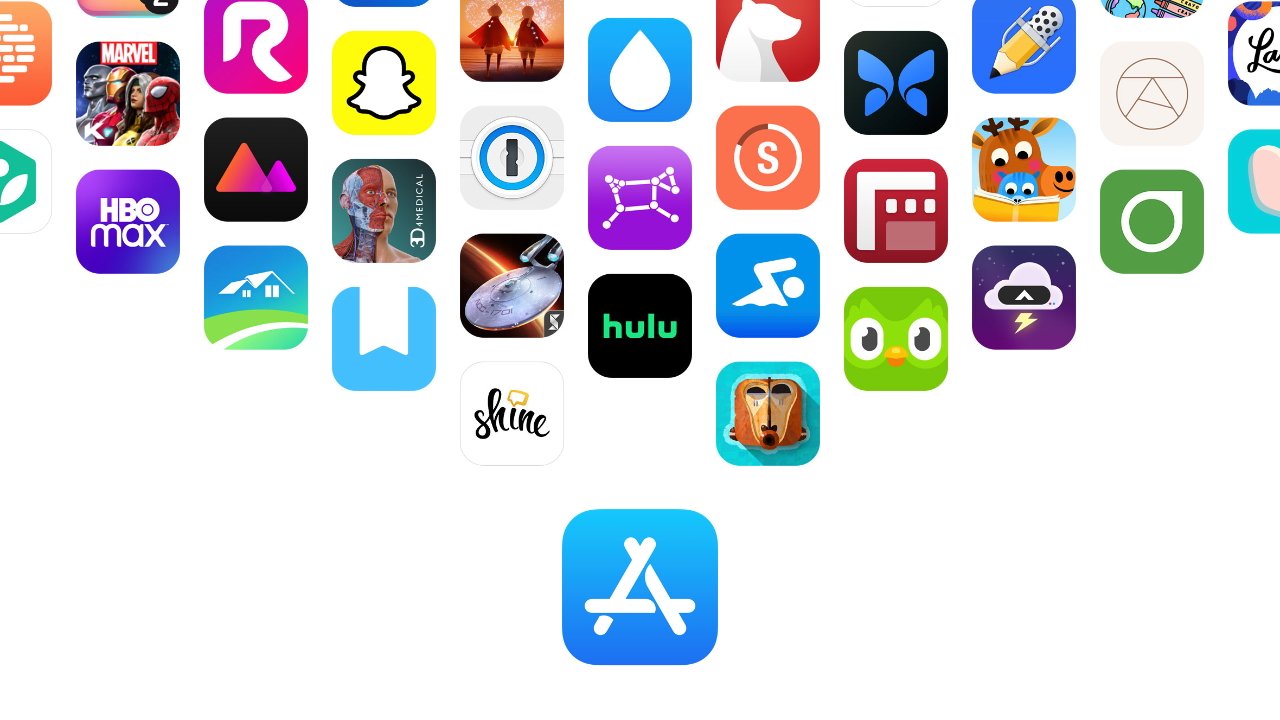
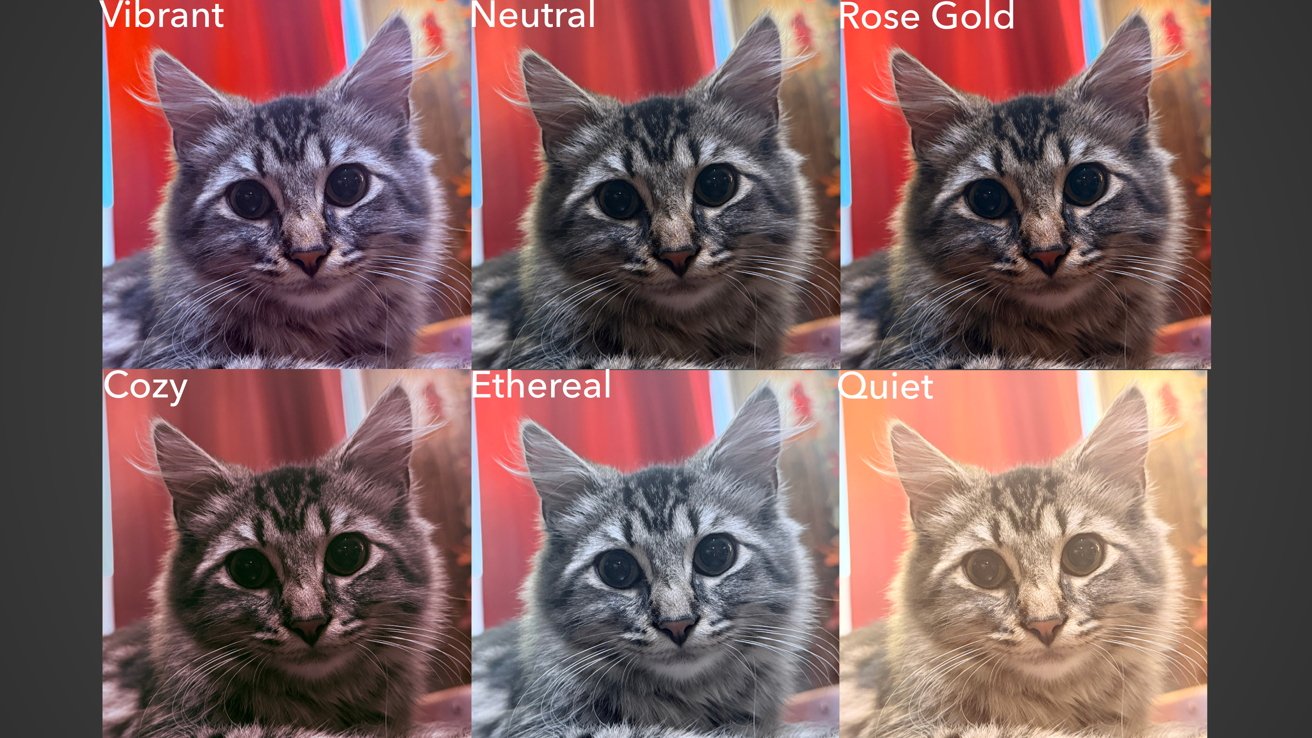
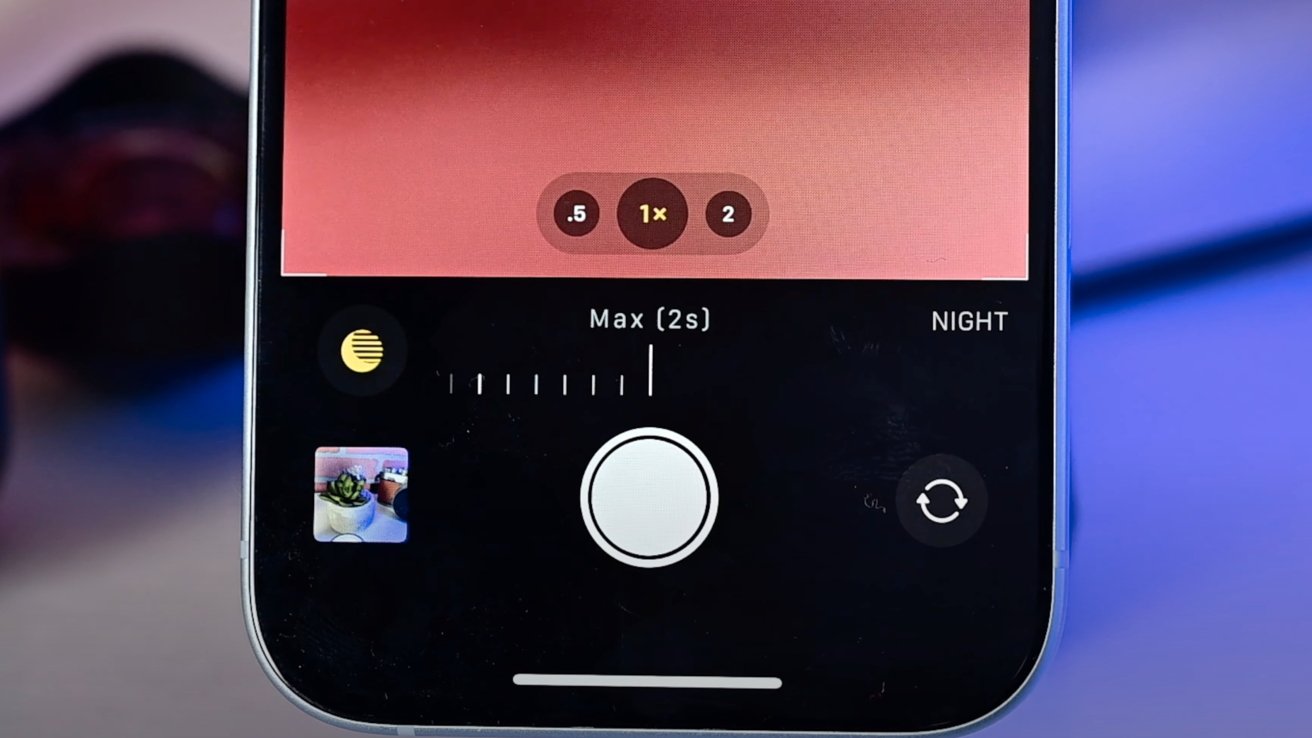

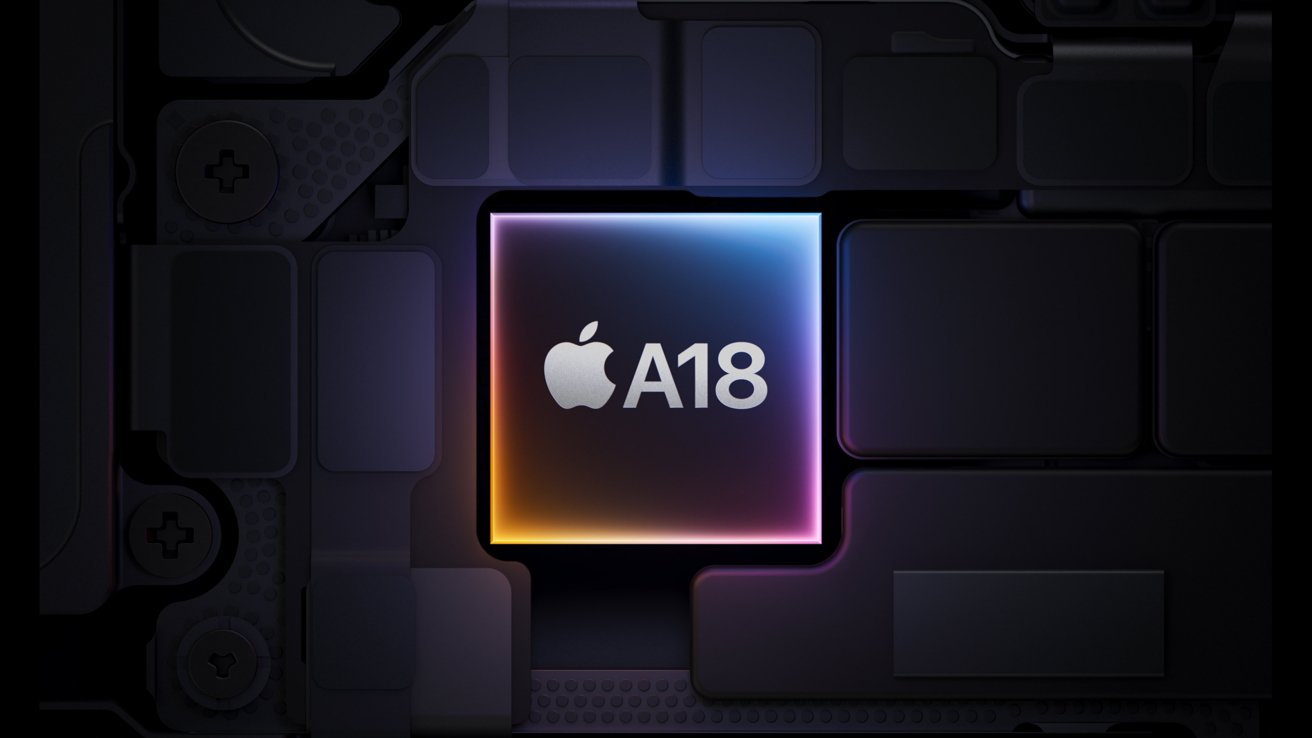
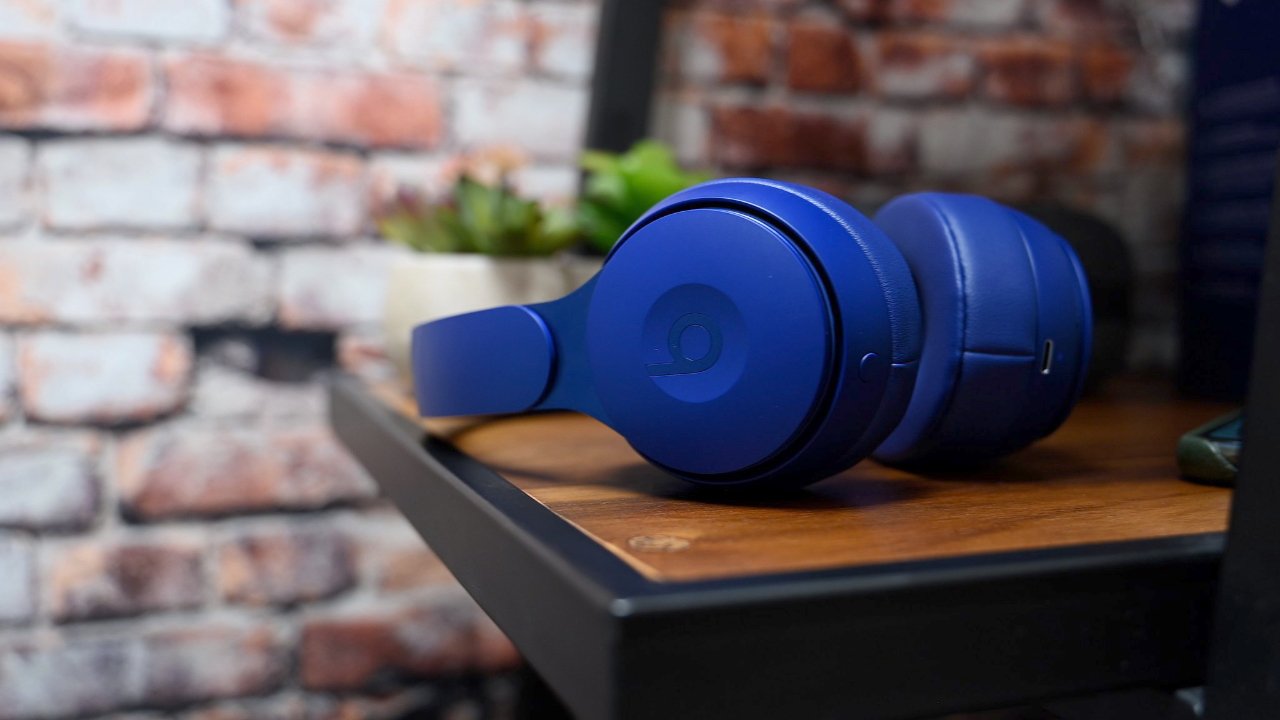
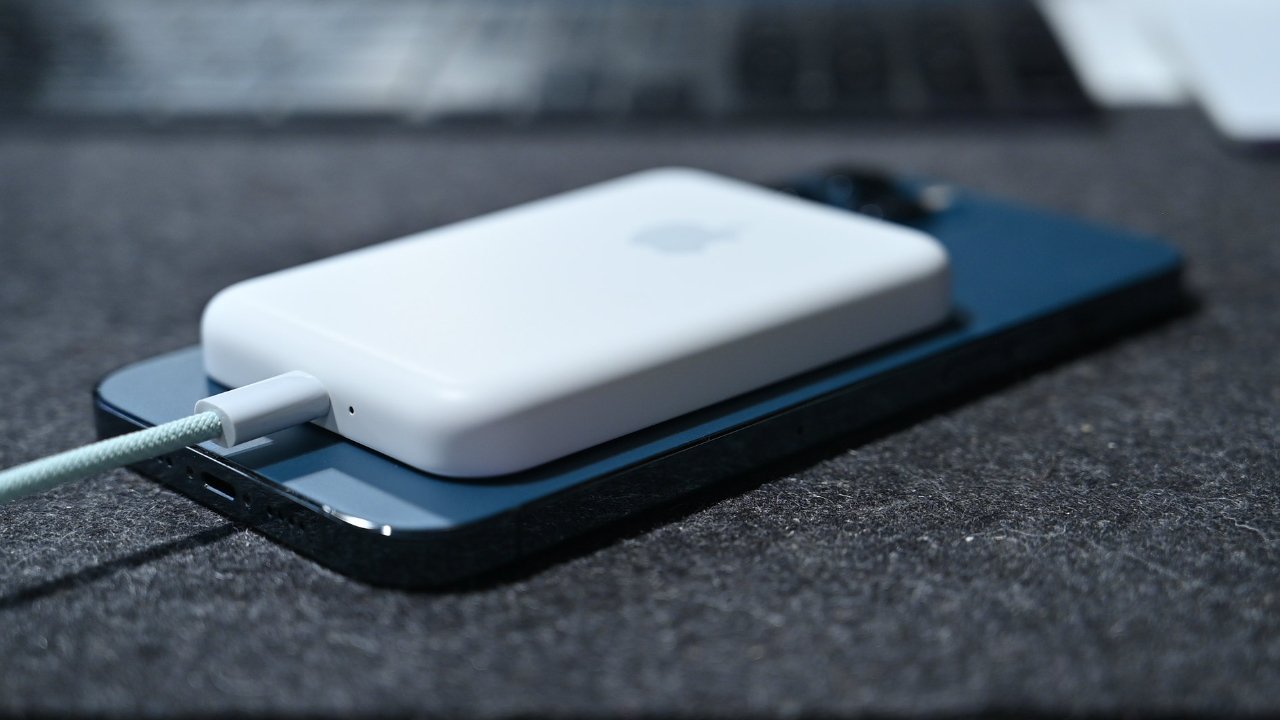
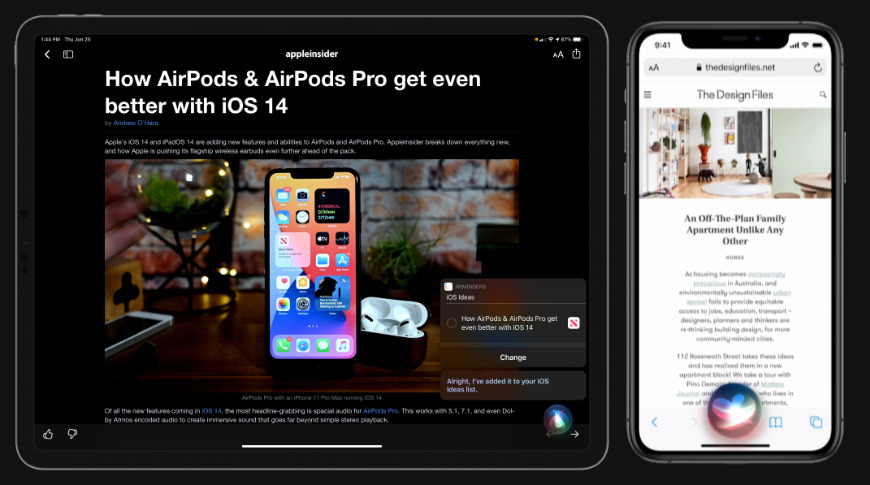
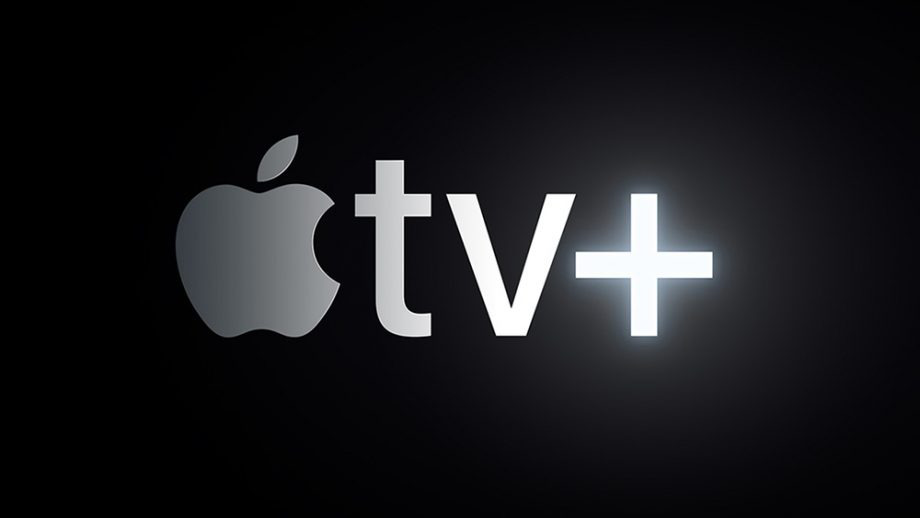
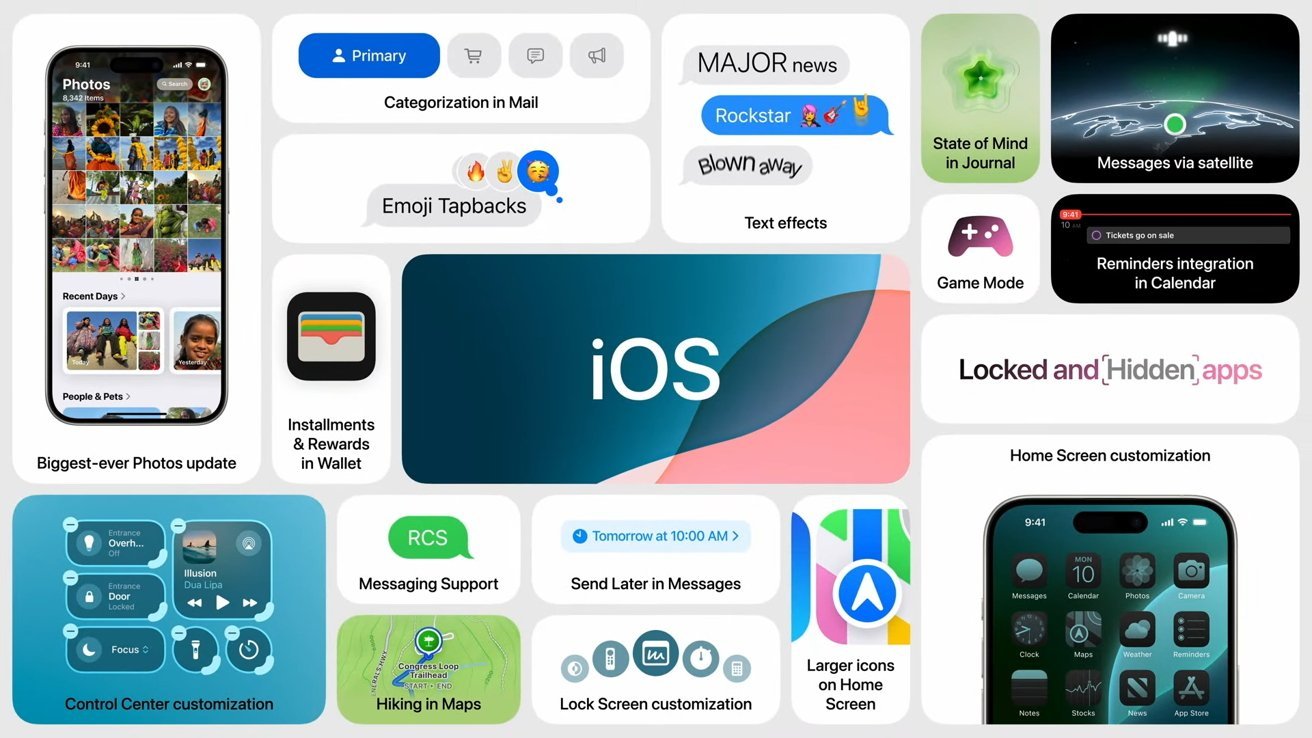

 Amber Neely
Amber Neely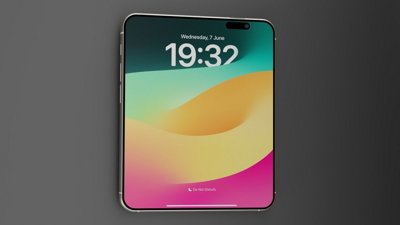
 William Gallagher
William Gallagher
 Andrew Orr
Andrew Orr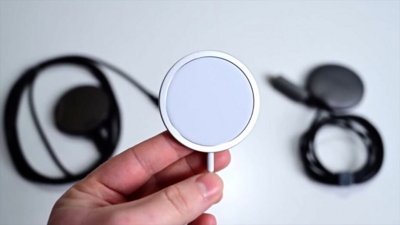
 Andrew O'Hara
Andrew O'Hara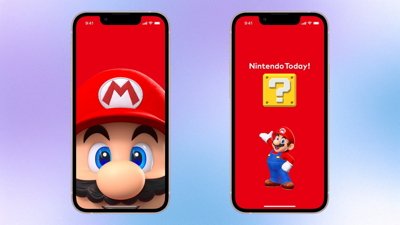
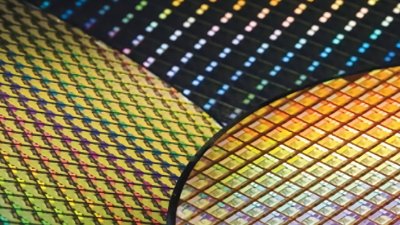
 Malcolm Owen
Malcolm Owen